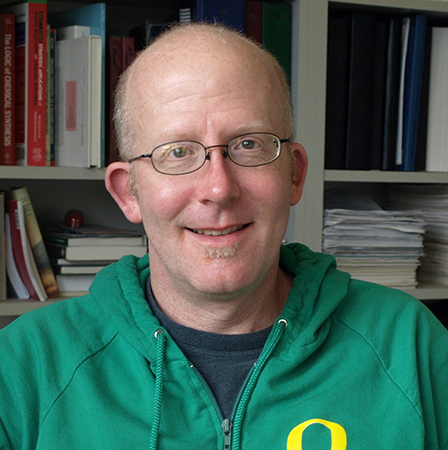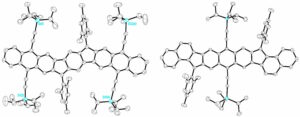
- This event has passed.
Organic Chemistry Seminar Series: Mike Haley (University of Oregon)
September 19, 2022 | 3:45 pm - 4:45 pm

About the Seminar:
Title
Diarenoindacenes and Diindenoarenes: From Antiaromatic Semiconducting Materials to Stable, Tunable Organic Diradicals
Abstract
This talk will present our synthetic, structural, computational and materials studies of a class of carbon-rich semiconducting molecules based on the indenofluorene (IF) skeleton.1 Access to the fully conjugated, 20 π-electron, formally antiaromatic system is accomplished via a variety of intermediate diones. These molecules in turn can be assembled via well-known organic possesses (Suzuki cross-coupling, benzylic oxidation, Friedel-Crafts acylation/alkylation).1 Optimization of their synthesis now permits access to IF derivatives in multigram quantities. We have shown that thin films or single crystals of several different IF scaffolds can serve as an active layer in organic field effect transistors (OFETs).2 Current studies (Figure 1) are focused on varying the antiaromaticity of the indacene unit by systematic alteration of the outer benzene groups with other aromatic units3 as well as on increasing the diradical character of the framework by expansion of the quinoidal core.4

1. (a) Frederickson, Rose & Haley, Acc. Chem. Res. 2017, 50, 977-987; (b) Dressler & Haley, J. Phys. Org. Chem. 2020, 33, e4114 2. (a) Marshall et al., Chem. Sci. 2016, 7, 5547-5558; (b) Zeidell et al., Chem. Mater. 2019, 31, 6962-6970.
3. (a) Frederickson, Zakharov & Haley, J. Am. Chem. Soc. 2016, 138, 16827-16838; (b) Frederickson et al., Synlett 2018, 29, 2562-
2566.
4. (a) Rudebusch et al., Nat. Chem. 2016, 8, 753-759; (b) Dressler et al., Nat. Chem. 2018, 10, 1134-1140; (c) Barker et al., J. Am.
Chem. Soc. 2020, 142, 1548-1555; (d) Dressler et al., Chem 2020, 6, 1353-1368; (e) Hayashi, Barker et al., J. Am. Chem. Soc.
2020, 142, 20444-20455.
About the Speaker:
Education
B.A., Rice University, 1987. Ph.D., Rice University, 1991 (W. Edward Billups). Postdoctoral: University of California, Berkeley, 1991-93 (K. Peter C. Vollhardt). Honors and Awards: American Chemical Society, Division of Organic Chemistry Fellowship, 1990-91; NSF Postdoctoral Fellowship, 1991-93; NSF CAREER Award, 1995-1998; US-Israel BSF Ernst D. Bergmann Memorial Award, 1997; Richard A. Bray Faculty Fellow, 1998; Camille Dreyfus Teacher-Scholar, 1998-2003; Alexander von Humboldt Research Fellow, 2000-2001; Thomas F. Herman Faculty Achievement Award for Distinguished Teaching, 2002; University of Oregon Fund for Faculty Members Excellence Award, 2007; Fellow, American Association for the Advancement of Science, 2011. At Oregon since 1993.
Research
The research interests of my group are deeply rooted in the exploration of important non-natural pi-electron rich systems. The group utilizes current synthetic methodology for the preparation of novel organic materials and compounds of theoretical interest. We investigate these compounds by modern physical organic methods to determine the important physical and chemical properties of these systems, such as conductivity, absorption/emission behavior, through-bond and through-space electronic interactions. Graduate and undergraduate students are actively involved in all aspects of the research, thus acquiring a strong synthetic and theoretical background.